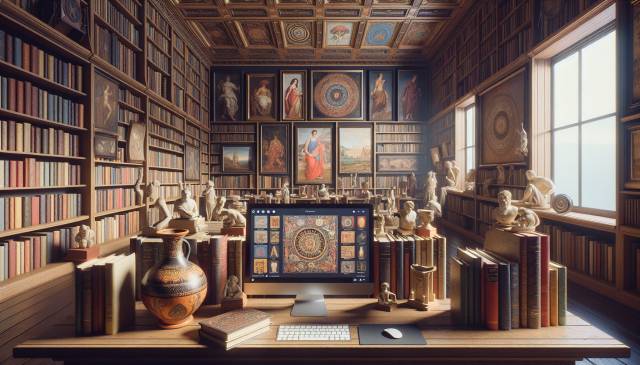
Art has been a vital part of human civilization, offering a glimpse into the cultures, values, and beliefs of societies throughout history. Understanding art history is not just about appreciating beautiful paintings or sculptures; it's about unraveling the stories behind them. In this post, we will explore the significance of art history, key movements, and how you can dive deeper into this fascinating subject through various courses offered by educational institutions.
The Importance of Art History
Art history serves several essential purposes:
- Cultural Understanding: Art reflects the societal norms and values of its time. By studying art history, we gain insights into different cultures and their evolution.
- Historical Context: Artistic movements often respond to historical events. Understanding the context behind a piece of art can enhance our appreciation and interpretation.
- Critical Thinking: Analyzing art encourages critical thinking skills. It pushes learners to question and interpret visual information actively.
- Creative Inspiration: Knowledge of art history can inspire contemporary artists, allowing them to build upon past ideas and innovate.
Key Art Movements to Explore
Art history is rich with diverse movements, each with its unique characteristics and philosophies. Here are some of the most significant:
- Renaissance (14th - 17th Century): A revival of classical learning and wisdom, focusing on humanism, perspective, and anatomical accuracy.
- Baroque (17th Century): Known for its grandeur, drama, and movement, Baroque art often depicted religious themes with emotional intensity.
- Impressionism (19th Century): This movement broke traditional rules, focusing on light, color, and everyday subject matter, paving the way for modern art.
- Modernism (Late 19th - 20th Century): Characterized by a departure from tradition, modernism explored abstraction and experimentation in art.
- Postmodernism (Late 20th Century): This movement questioned the very definitions of art, embracing diversity, irony, and complexity.
How to Get Started with Art History
Whether you're a beginner or looking to expand your knowledge, there are numerous resources available. Here are some steps to guide you:
- Online Courses: Explore platforms that offer comprehensive art history courses. Many universities provide access to free or affordable classes.
- Books and Journals: Start with foundational texts like âThe Story of Artâ by E.H. Gombrich and subscribe to art history journals for current research and trends.
- Museum Visits: Nothing compares to experiencing art in person. Visit local museums and galleries to see works up close.
- Documentaries and Lectures: There are many documentaries and online lectures that provide engaging insights into various art movements and artists.
Recommended Online Courses
Here are some courses that can help you delve into art history:
- Art History Basics: A beginner-friendly course that covers essential concepts and movements.
- The Renaissance and Baroque Periods: A focused course that explores the key artists and artworks of these influential eras.
- Modern Art Movements: Dive into the 20th century and explore the evolution of modern art.
- Women in Art: Learn about the contributions of female artists throughout history and their impact on the art world.
Conclusion
Art history is a profound and rewarding field of study that opens up a world of aesthetic appreciation and cultural understanding. By engaging with art from different eras and movements, you not only enrich your knowledge but also enhance your ability to think critically and creatively. With a wealth of resources available, from online courses to local museums, thereâs no better time to embark on your journey through art history. So, gather your curiosity and start exploring the stories that art has to tell!

